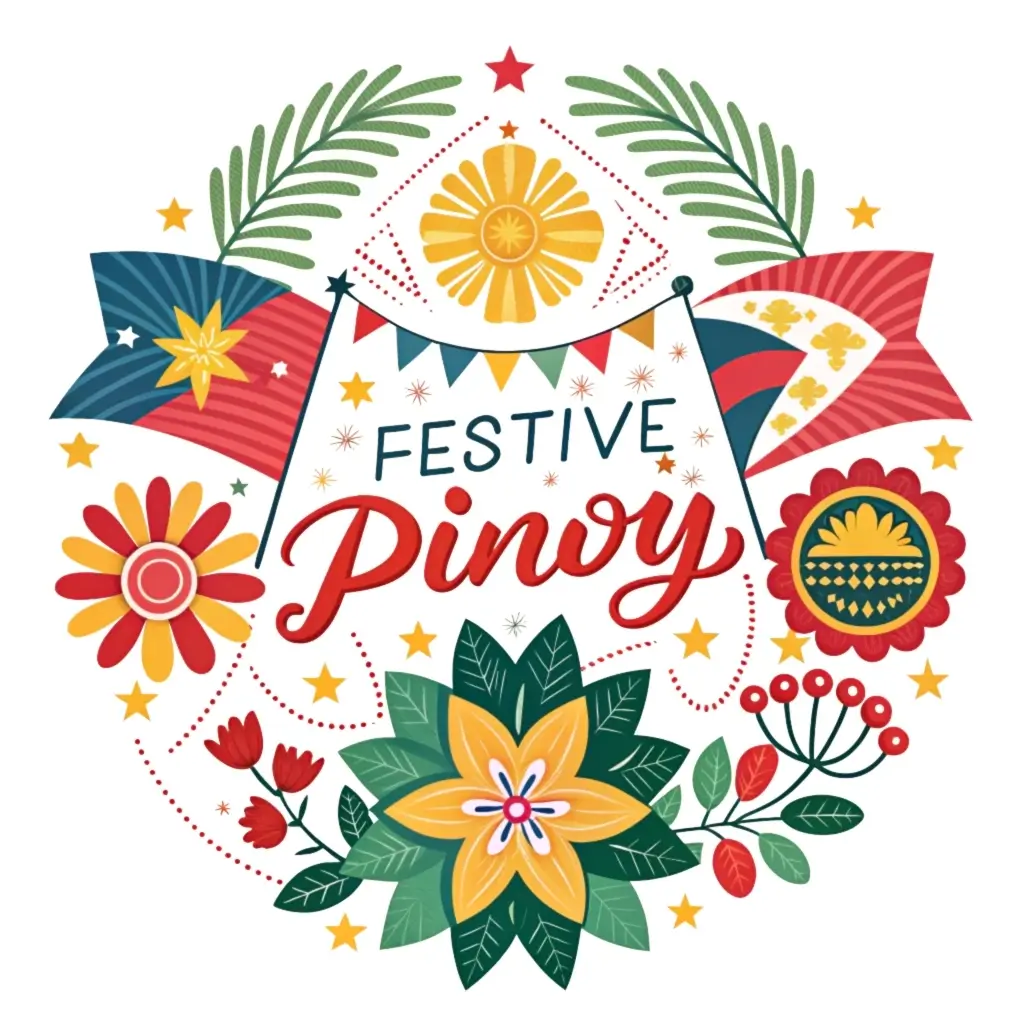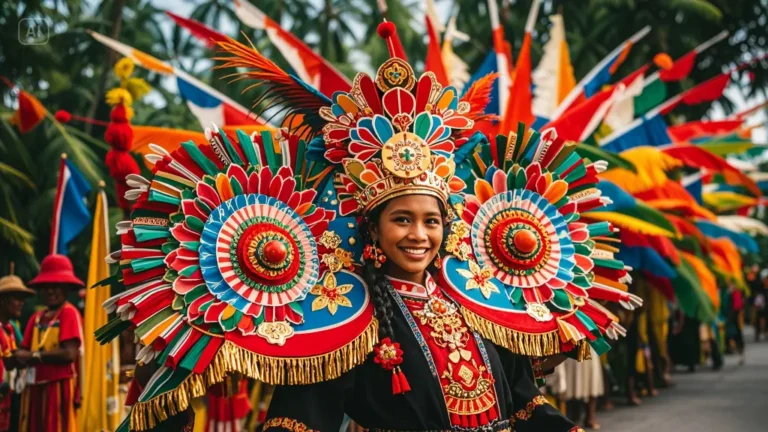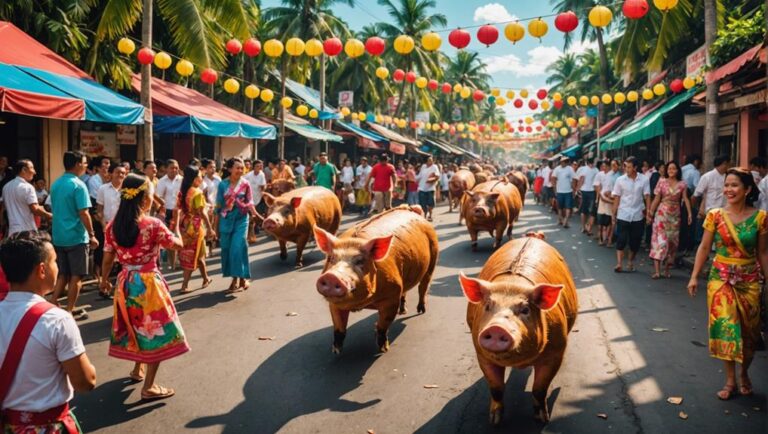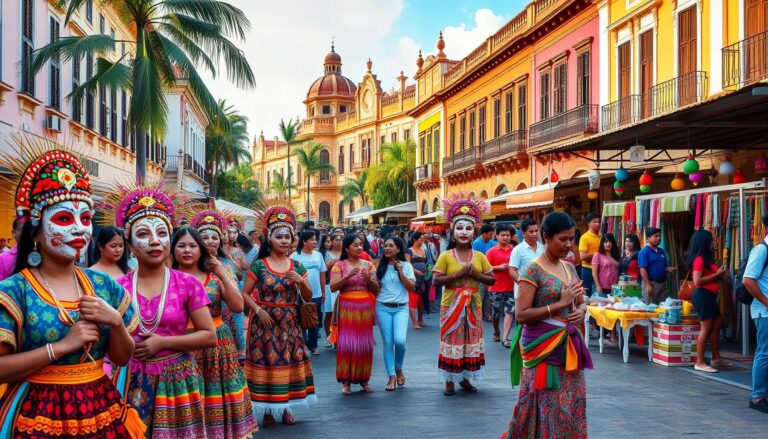Kannawidan Ylocos: Ilocos Sur Kannawidan Ylocos: Complete Festival Guide
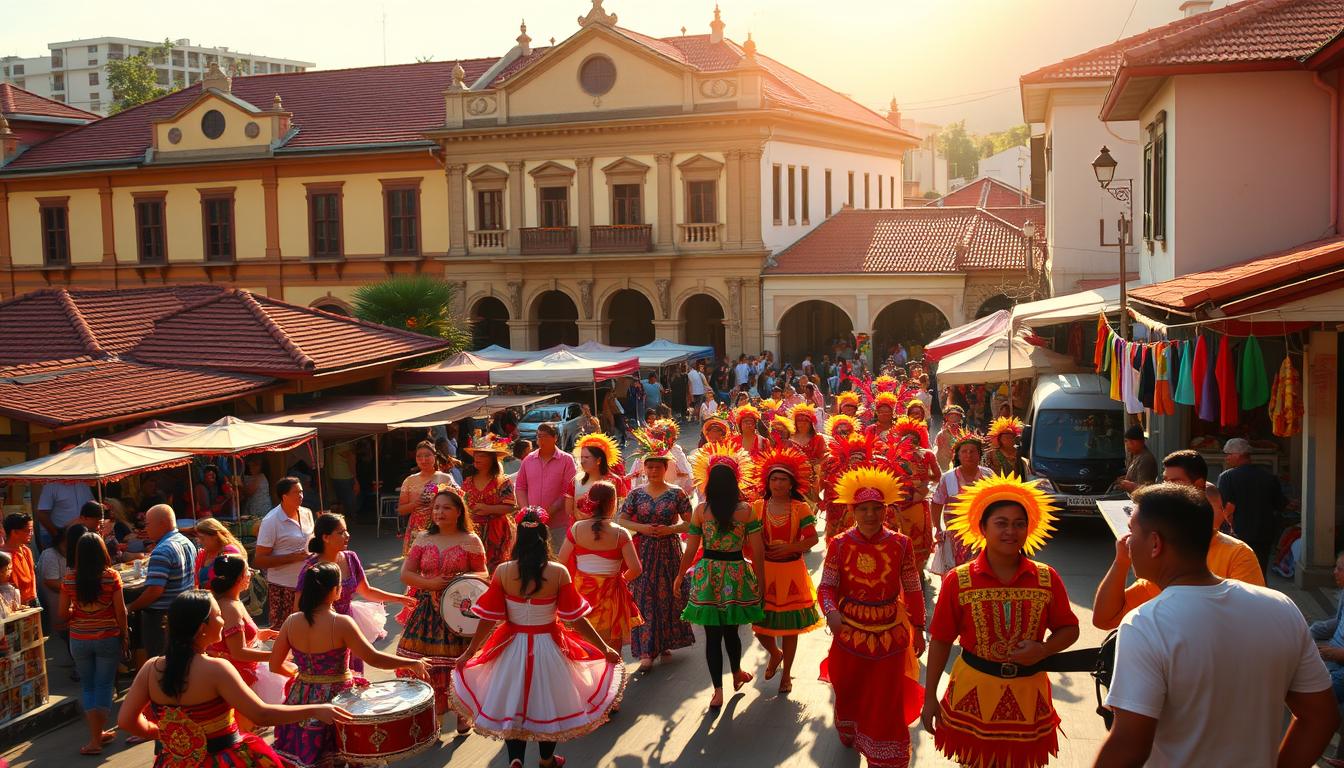
In the northern Philippines, a vibrant celebration of history comes alive every year. The Kannawidan Ylocos Festival transforms Ilocos Sur into a living museum of cultural pride. Launched in 2008 under Governor Deogracias Victor Savellano, this week-long event honors the province’s 190th founding anniversary.
Rooted in the Ilocano word “tawid” (meaning legacy), the festival preserves traditions dating back to the 1818 Royal Decree that split the region into two provinces. From late January to early February, locals and visitors experience folk dances, agricultural fairs, and religious processions.
This guide explores the festival’s origins, iconic activities like the patron saints’ parade, and its role in safeguarding Indigenous practices. You’ll discover how Ilocos Sur blends history with modern tourism through:
Key Takeaways
- Founded in 2008 to mark Ilocos Sur’s 190th anniversary
- Week-long celebration of local agriculture, faith, and artistry
- Features traditional games, cultural shows, and trade fairs
- Highlights the province’s split from Ilocos Norte in 1818
- Promotes preservation of Ilocano heritage through tourism
Overview of the Kannawidan Ylocos Festival
As January transitions to February, Ilocos Sur transforms into a vibrant stage for cultural preservation. This week-long celebration runs from late January through early February, peaking on February 2 – the exact date marking the province’s founding anniversary. Locals call this period a living bridge between past and present.
Festival Dates and Celebration Duration
The ylocos festival typically begins January 28 with a Holy Mass and candlelit procession through historic Vigan streets. For 10-14 days, communities host ritual masses honoring Spanish-era traditions. February 2 forms the emotional core, commemorating the 1818 division that shaped modern Ilocano identity.
Daily schedules burst with traditional games like coconut stilt races and woven basket competitions. Cultural performances reenact pre-colonial courtship dances nightly. These activities create shared experiences across generations.
Significance for Ilocos Sur and Its Neighbors
This event unites seven Ilocos Sur towns and neighboring provinces through agricultural showcases. Rice wine-making contests and Abel Iloko weaving demonstrations draw participants from as far as La Union. Trade fairs spotlight regional specialties like bagnet and tinubong bamboo tubes.
The festival’s energy spills beyond provincial borders. Neighboring areas send dance troupes for street competitions, while historians lead walking tours of Spanish-era landmarks. Through these interactions, the celebration strengthens cultural ties across Northern Luzon.
History and Cultural Heritage of Ilocos Sur
Long before Spanish galleons reached Philippine shores, Ilocos Sur thrived as Samtoy – a name meaning “our language” in ancient Ilocano. This coastal region’s rich culture evolved through trade with Chinese merchants and resistance against colonial forces. Today, its layered history lives through UNESCO-protected architecture and time-honored practices.
From Ancient Roots to Colonial Crossroads
Spanish conquistador Juan de Salcedo arrived in 1572, establishing Vigan as a colonial hub. The 1818 split of Provincia Ilocos created today’s provincial borders. This division sparked unique customs blending Indigenous resilience with European influences.
Faith and Rebellion in Everyday Life
Augustinian missionaries built iconic churches like Santa Maria, now World Heritage Sites. Their mass rituals merged with local beliefs, creating hybrid traditions. The 1807 Basi Revolt against wine monopolies shows how Ilocanos reshaped foreign systems to protect their heritage.
Living History in Modern Times
Traditional crafts like Abel Iloko weaving survived industrialization through family workshops. Festivals repurpose Spanish-era processions to honor ancestral heroes. These evolving traditions prove Ilocos Sur’s past remains vibrantly present.
| Era | Cultural Influence | Modern Impact |
|---|---|---|
| Pre-Hispanic | Trade with Asian neighbors | Bamboo crafts & rice terraces |
| Spanish Colonial | Christian festivals | World Heritage architecture |
| Post-1818 Division | Distinct provincial identity | Annual founding celebrations |
Through centuries of change, Ilocos Sur maintained its rich culture by adapting rather than abandoning traditions. This flexibility makes its heritage both timeless and continually relevant.
Kannawidan Ylocos: Celebrations, Activities, and Traditions
Rhythmic drumbeats echo through cobblestone streets as the province bursts into life. This cultural showcase blends ancestral practices with modern creativity, offering something for every visitor.

Traditional Games and Dance Spectacles
Locals revive childhood memories through traditional games like coconut stilt races. The Tadek Ken Balliwes dance competition takes center stage, where teams perform intricate footwork to live gong music. Students from San Emilio National High School often lead these vibrant displays.
Cultural Performances That Captivate
Evening shows transform plazas into open-air theaters. Crowds gather for zarzuela performances blending Spanish-era drama with Ilocano humor. The Fr. Jose Burgos Awards recognize cultural champions during these events, creating memorable nights under the stars.
Taste of Heritage
Food stalls line festival grounds, serving crispy bagnet and sweet tinubong rice cakes. The OTOP exhibits showcase town specialties – from handwoven textiles to aged basi wine. Visitors often leave clutching bamboo crafts and recipes for local delicacies.
These events thrive through community effort. Grandparents teach children traditional steps, while chefs demonstrate century-old cooking methods. This living celebration proves cultural preservation can be joyful – and delicious.
Conclusion
For over a decade, this annual celebration has bridged past and present through vibrant street processions and time-honored rituals. The event honors centuries of history while showcasing the province Ilocos’ thriving traditions – from ancestral dance forms to award-winning agricultural products.
Each year, communities reinforce their cultural identity through shared practices. The flickering candles of religious processions mirror the enduring spirit of early settlers. Local artisans display handcrafted products like woven textiles and bamboo crafts, proving heritage remains economically vital.
Visitors witness living history in action. Youth groups perform Spanish-era dramas while chefs demonstrate age-old cooking techniques. These evolving traditions highlight how the province Ilocos balances preservation with innovation across years of celebration.
Plan your visit during late January to experience this cultural mosaic firsthand. Taste sizzling bagnet, join street dances, and marvel at UNESCO-recognized architecture. The festival’s power lies in its ability to turn spectators into participants – ensuring traditions thrive for generations.
